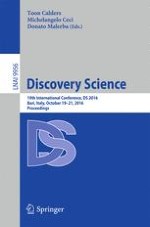2016 | OriginalPaper | Buchkapitel
DeepRED – Rule Extraction from Deep Neural Networks
verfasst von : Jan Ruben Zilke, Eneldo Loza Mencía, Frederik Janssen
Erschienen in: Discovery Science
Aktivieren Sie unsere intelligente Suche, um passende Fachinhalte oder Patente zu finden.
Wählen Sie Textabschnitte aus um mit Künstlicher Intelligenz passenden Patente zu finden. powered by
Markieren Sie Textabschnitte, um KI-gestützt weitere passende Inhalte zu finden. powered by
